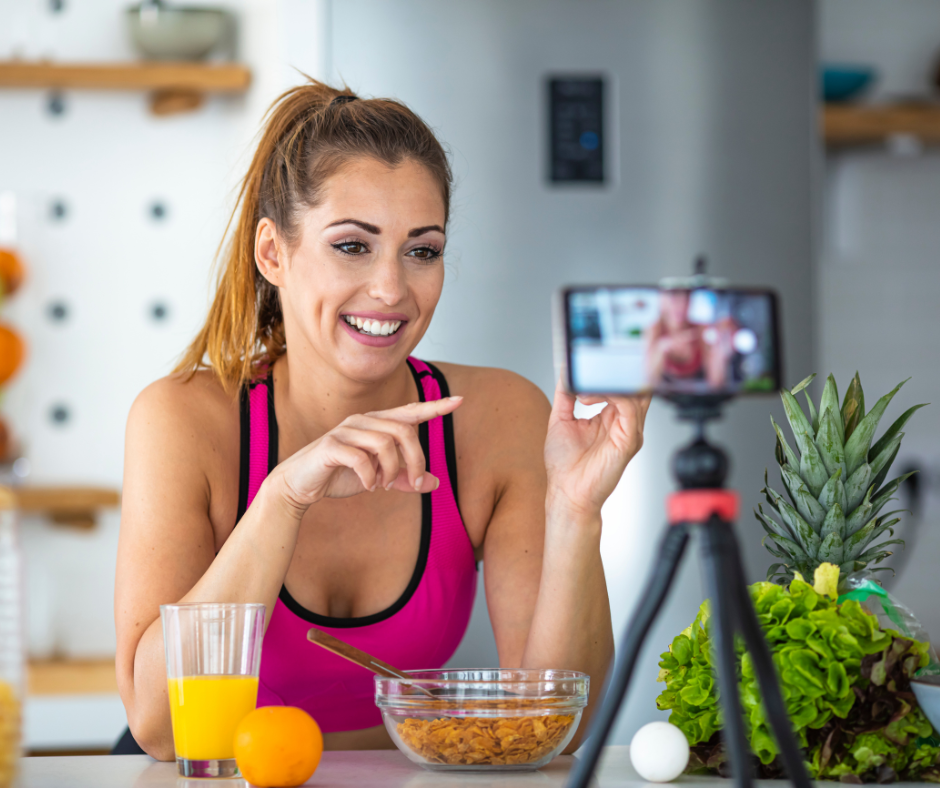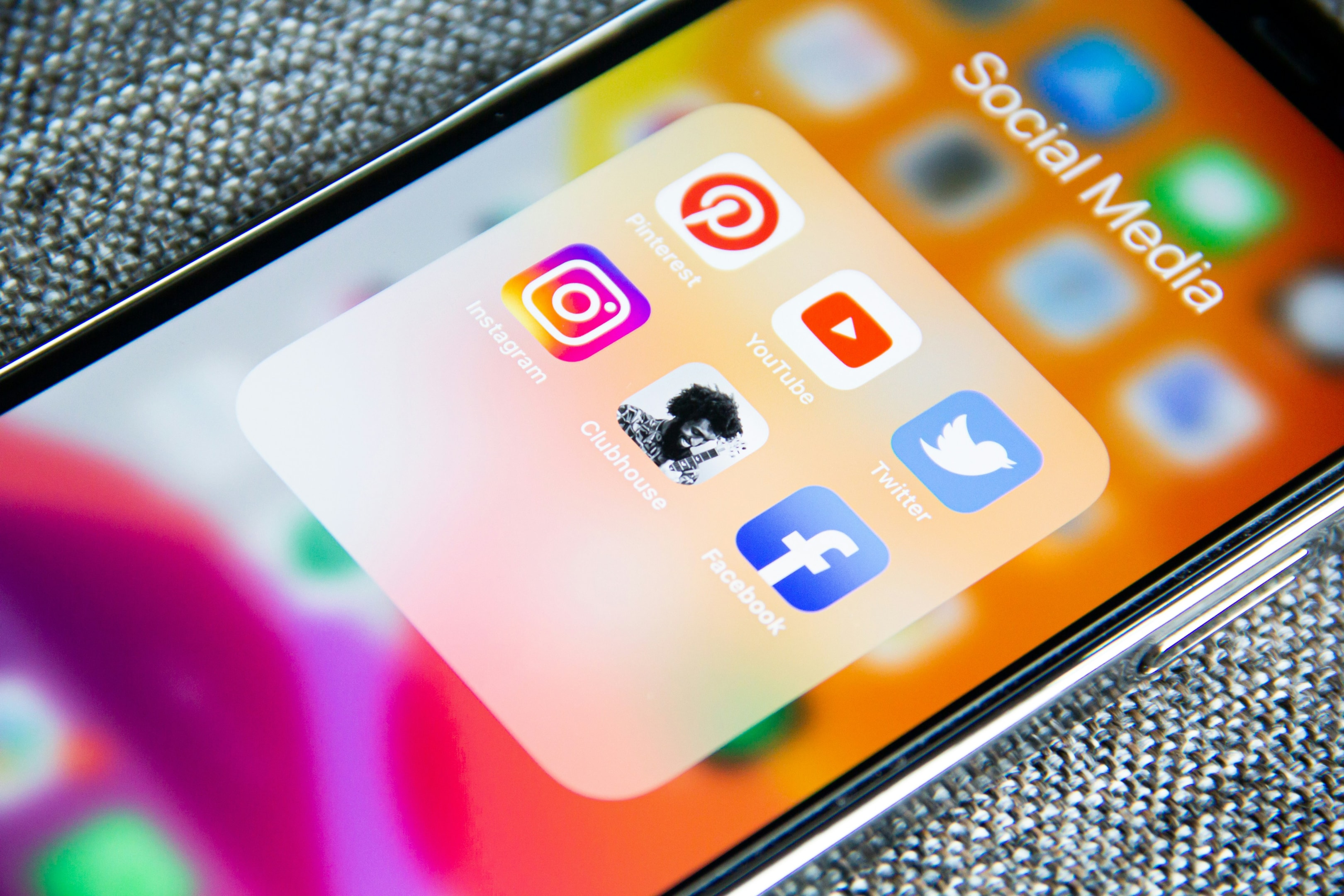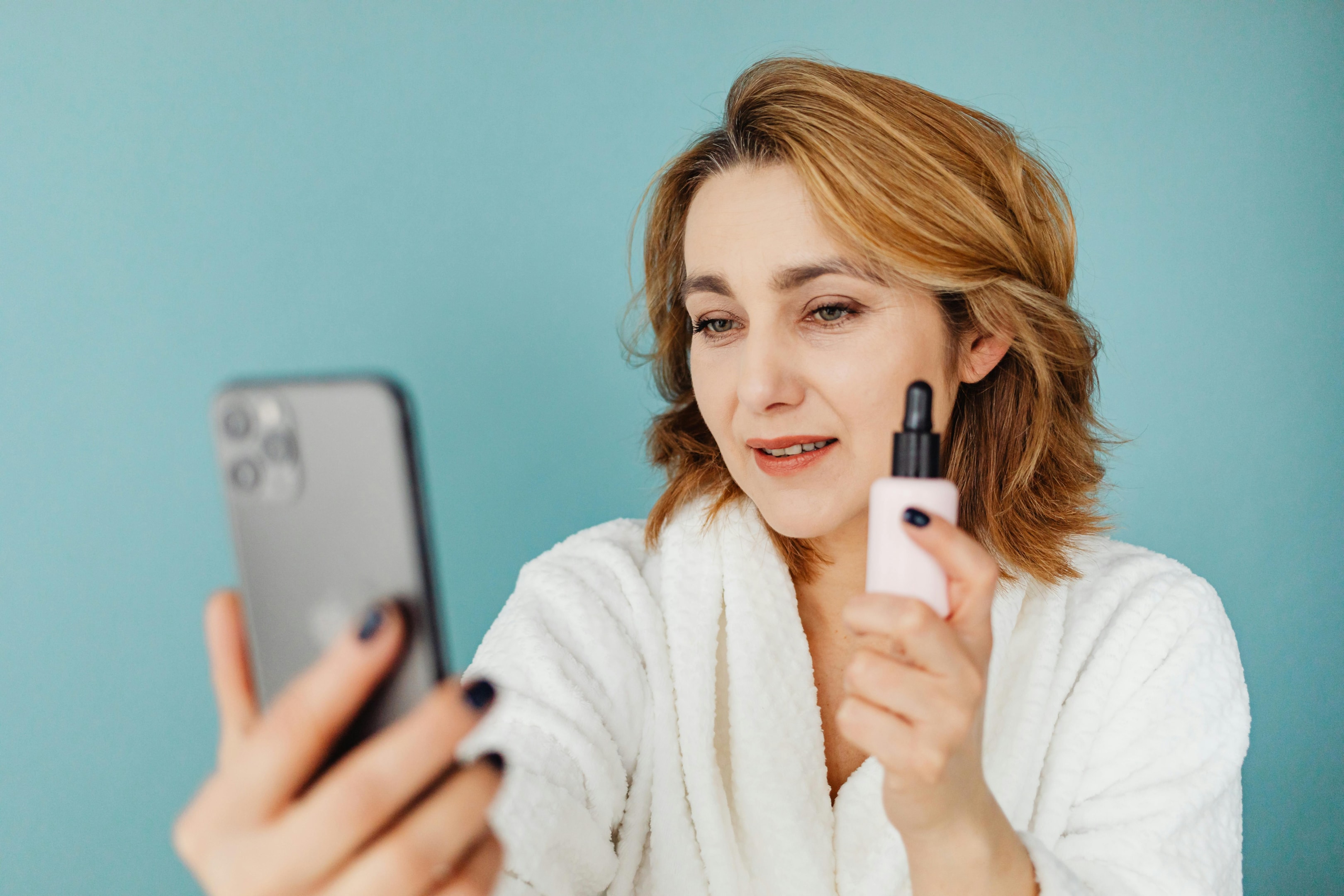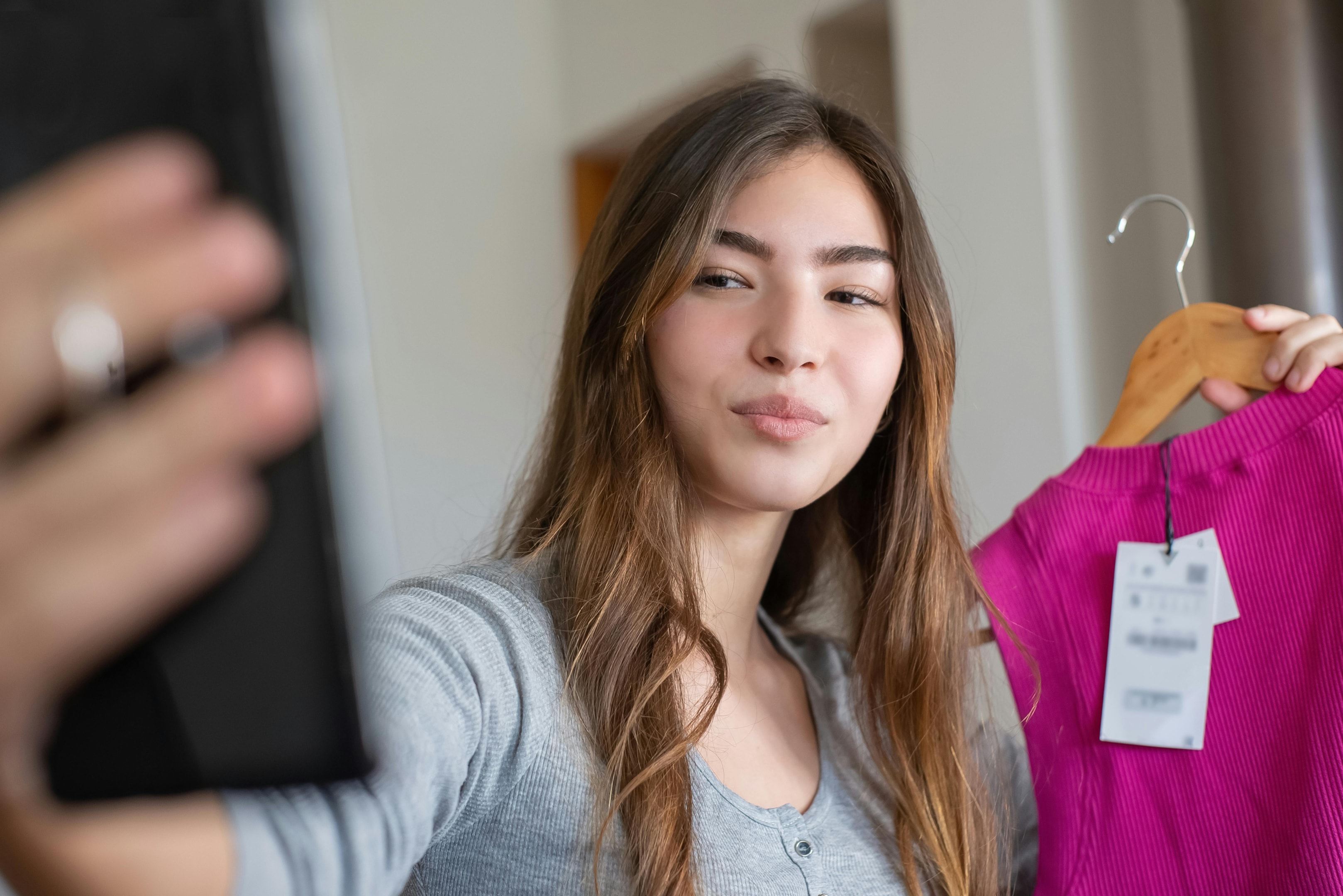
The Role of Influencers in Digital Marketing
The internet is louder than ever. Every brand is posting on Instagram, every startup is running ads, and every marketer is trying to out-shout the competition on TikTok.
And yet, most of those efforts hit the same wall: they don’t connect.

Sure, the posts get views and likes. Maybe even a handful of shares. But when it comes to moving the needle, building brand trust, driving sales, and creating meaningful engagement, many digital marketing strategies fall flat.
Why?
Because today’s social media users don’t want more polished ads. They want authenticity. They want to feel like they’re hearing from a trusted friend, not a corporate campaign.
This is where influencers come in.
Influencers play a crucial role in bridging the gap between brands and audiences. They humanize marketing efforts, create engaging content that feels real, and help brands cut through the noise on crowded social media platforms.
Instead of relying solely on traditional advertising, brands are now partnering with relevant influencers to increase brand awareness, enhance credibility, and reach niche audiences in ways that feel personal and persuasive. When combined with a broader digital marketing strategy, influencer collaborations become a powerful way to engage the right audience and achieve measurable results.
In this guide, we’ll break down exactly why influencer marketing works, the different types of influencers (from nano to mega), and how to structure influencer marketing campaigns.
If you’re running a digital marketing agency trying to build brand visibility online, this is your playbook for leveraging influencers as valuable partners.
What Is Influencer Marketing?
Let’s get the definition straight.
Influencer marketing is a digital marketing strategy where brands collaborate with individual influencers. People who have built credibility, trust, and a loyal following on social media platforms to promote products, services, or campaigns.
Think of it as word-of-mouth marketing 2.0. Instead of casting a wide advertising net and hoping it sticks, you work with suitable influencers whose followers align with your target demographic. The result is messaging that feels less like a sales pitch and more like a recommendation from a friend.
The difference between traditional celebrities and modern social media influencers is simple: depth of connection.
Traditional advertising often leaned on big names for exposure. But social media influencers bring something more powerful to the table: a deep understanding of their communities. They know what resonates, what sparks conversation, and what drives purchasing decisions.
And that’s why influencer collaborations are reshaping marketing strategies everywhere. When influencers share content, their followers trust it. According to Nielsen, 92% of consumers trust recommendations from people they know over any form of advertising. That trust translates into higher engagement rates, stronger brand perception, and ultimately, more conversions.
In short:
Influencer marketing isn’t a passing fad. It’s a crucial role in today’s digital marketing strategies, one that enables brands to reach relevant audiences, build brand trust, and drive real results.
Why Influencer Marketing Works

If you’ve ever wondered why some brands feel like they’re everywhere online while others stay invisible, here’s the secret: it’s not about spending more on ads. It’s about trust.
And trust is exactly what influencers bring to the table.
Here are the core reasons influencer marketing is so effective in the digital era:
1. Authenticity Is the New Currency
Traditional advertising is polished, but often feels impersonal. Influencers, on the other hand, let their audiences into their real lives. When they recommend a product, it comes across as genuine, not scripted.
Followers trust that if their favorite creator uses a product, it’s worth considering. In fact, studies show that people trust influencer recommendations far more than they trust traditional ads.
This authenticity translates into stronger brand perception. Instead of forcing your way into a conversation, influencers invite your brand into spaces where you’re welcomed. Marketing experts note that influencer collaborations work because they mirror the power of word-of-mouth, one of the most persuasive and enduring forms of brand communication.
2. Social Proof in Action
Think about the last time you tried a restaurant because a friend recommended it. That’s social proof. Influencers provide it at scale. When their audience sees them rave about a product, it signals “this brand is legit.” That endorsement carries weight because followers align their decisions with people they admire.
3. Precision Targeting, Without the Guesswork
Every marketer knows the pain of spending money on ads that hit the wrong audience. With influencers, that problem disappears. Each influencer has already built a niche community: beauty lovers, gamers, fitness enthusiasts, finance geeks, you name it.
By working with relevant influencers, you get direct access to your target audience without wasting budget on irrelevant demographics.
4. Engagement That Goes Beyond Impressions
Here’s a stat worth repeating: influencer posts drive significantly higher engagement rates than branded posts. Why? Because audiences actually want to interact with influencer content. They leave comments, ask questions, and even create their own user-generated content in response.
That’s not passive scrolling, that’s meaningful engagement.
5. Built-In Content Creation
Influencers aren’t just distribution channels; they’re creators. They know how to shoot, edit, and package content that resonates. And the best part? Brands can repurpose this engaging content across their own marketing campaigns.
It’s a win-win: influencers bring fresh creative perspectives, and brands walk away with high-quality assets for ongoing promotion.
Types of Influencers: From Nano to Mega
Not all influencers are created equal, and that’s a good thing. Depending on your marketing objectives, different types of influencers bring different strengths to the table.
Here’s the breakdown:
Nano Influencers (1K–10K Followers)
Small audience, big impact. Nano influencers thrive in niche communities where trust runs deep. Their content feels more like advice from a friend than a sales pitch, which makes them powerful partners for small businesses or brands seeking hyper-targeted exposure.
Micro Influencers (10K–100K Followers)
Micro influencers strike the balance between reach and intimacy. They’re often seen as experts in their niche, with highly engaged audiences who value their recommendations. For many brands, especially those seeking relevant audiences with strong engagement rates, micro influencers are the sweet spot.
Macro Influencers (100K–1M Followers)
Macro influencers are well-established personalities with significant reach. They’re valuable partners for brands seeking to increase brand awareness on a larger scale, especially when launching new products or running big influencer campaigns.
Mega Influencers (1M+ Followers)
Think celebrities, YouTube sensations, and TikTok stars. Mega influencers can put your brand in front of millions overnight. While engagement rates may be lower, the sheer brand exposure is unmatched. This is where traditional advertising and modern influencer marketing collide—mass visibility through personalities audiences recognize instantly.
Virtual Influencers
Yes, you read that right. Virtual influencers, computer-generated characters with huge social media followings are gaining traction. While still new, they represent the future of digital marketing strategies: fully brand-controlled, always on-message, and surprisingly effective at driving curiosity and conversation.
Social Media Platforms: The Influencer Playground

Influencers live where the audience lives on social media. But each platform has its own culture, strengths, and role in influencer marketing campaigns. Understanding these differences is key to picking the right stage for your brand’s story.
- Instagram: The home of visuals. Perfect for lifestyle, fashion, beauty, and fitness influencers. Stories, reels, and eye-catching feeds make it a go-to for creating engaging content.
- TikTok: The viral machine. Short-form videos can catapult a brand from unknown to sold out in a matter of days. For brands targeting younger demographics, TikTok is where influencers play.
- YouTube: Long-form credibility. Ideal for tutorials, reviews, and in-depth storytelling. Great for complex products that need more explanation.
- Twitch: Built for live engagement. Gaming dominates here, but it’s expanding into music, lifestyle, and even education. Audience engagement is real-time and highly interactive.
- LinkedIn: The rising star for B2B influencer collaborations. Professionals sharing insights, thought leadership, and industry expertise are carving out a new lane for influencer marketing in corporate spaces.
What makes these platforms powerful isn’t just their reach but it’s the community. Social media users don’t just watch influencers; they engage with them. Comments, polls, live Q&As. This two-way interaction fosters connection, trust, and loyalty.
For brands seeking enhanced visibility, social media isn’t just the backdrop, but it’s the engine that enables influencers to amplify your message and drive real marketing results.
Benefits of Influencer Marketing for Brands
If you’re still wondering whether influencer marketing is worth the investment, let’s cut to the chase: the benefits are undeniable. When done right, influencers don’t just add to your marketing efforts—they multiply them.
Here’s what brands gain when they engage influencers strategically:
1. Increase Brand Awareness Instantly
Influencers already have the attention of your target demographic. By partnering with them, your brand gets introduced to new, relevant audiences you may have never reached otherwise. Think of it as word-of-mouth marketing on steroids. One post can skyrocket brand exposure overnight.
2. Drive Real Engagement and Conversions
This isn’t just about likes or vanity metrics. Influencer campaigns are designed to create meaningful engagement. Followers trust influencers, which means their recommendations carry weight.
That trust often translates into action: visiting your website, signing up for your newsletter, or making a purchase. A successful influencer marketing campaign connects visibility with tangible results.
3. Build Brand Trust and Credibility
Traditional advertising can feel like shouting into the void. Influencer collaborations, on the other hand, feel personal.
When influencers share your brand, it’s seen as an endorsement from someone their audience already believes in. According to Edelman’s Trust Barometer, peer and influencer voices often rank higher than corporate communications in credibility. This enhanced credibility humanizes your brand, building long-term trust.
4. Precision Targeting Without Wasting Ad Spend
Because influencers serve niche audiences, you can reach exactly who you need to reach. Instead of paying for broad ad impressions that may or may not land, influencer marketing ensures your message is landing with relevant audiences who are more likely to become potential customers.
5. Amplify Reach Beyond Your Network
Every influencer brings their own circle of influence. Partnering with them doesn’t just put your brand in front of followers. It creates ripple effects across their communities, enabling brands to scale awareness quickly.
Types of Influencer Marketing Campaigns

One of the reasons influencer marketing has become a staple in digital marketing strategies is its flexibility. Brands aren’t limited to one type of campaign. Instead, they can mix and match approaches depending on marketing objectives, budgets, and target audiences.
Here are some of the most effective campaign styles:
- Sponsored Content: Influencers weave your product or service into their normal posts. Photos, videos, or stories, making it feel organic.
- Product Reviews & Unboxings: Perfect for building trust. Followers love seeing authentic reactions and hearing honest opinions before they buy.
- Brand Ambassador Programs: Long-term partnerships where influencers consistently promote your brand. These deepen loyalty and help create a natural, ongoing brand narrative.
- Affiliate Marketing: Influencers earn a commission through trackable links or discount codes. Great for performance-based marketing campaigns that focus on measurable ROI.
- Social Media Takeovers: An influencer runs your brand’s account for a day, offering fresh content and engaging directly with your audience.
- Giveaways & Contests: Exciting and interactive. By hosting a contest with influencers, brands can boost engagement, gain followers, and generate buzz.
The key is choosing a campaign style that aligns with your marketing objectives. For example, if the goal is awareness, a takeover or giveaway might make sense. If the goal is sales, affiliate partnerships may be the better route.
Strategies for a Successful Influencer Marketing Campaign
Here’s the truth: not every influencer campaign delivers results. The difference between a mediocre attempt and a high-performing campaign comes down to strategy.
Here’s your blueprint for getting it right:
1. Identify the Right Influencers
Forget chasing follower count. The right influencers are the ones whose followers align with your brand values and target demographic.
Look at engagement rates, audience demographics, and content style. A micro influencer with 20K highly engaged followers can outperform a mega influencer with a million passive ones.
2. Define Clear Marketing Objectives
Every campaign should start with a destination in mind. Are you trying to increase brand awareness? Drive conversions? Generate user-generated content?
Setting clear marketing objectives gives you measurable outcomes and keeps both you and the influencer aligned.
3. Build Authentic, Strategic Collaborations
Influencers bring creativity and a deep understanding of their audience. Give them the freedom to create engaging content in their own voice.
It’s why their followers trust them in the first place. The best influencer collaborations feel like a natural fit, not a forced ad.
4. Measure Campaign Performance With Key Metrics
Don’t stop at impressions. Track metrics that matter:
- Engagement rates (likes, comments, shares).
- Website traffic from influencer links.
- Conversion rates and sales.
- ROI compared to spend.
- Audience growth rate
- Brand awareness and sentiment
A successful influencer marketing campaign is built on alignment: the right influencers, the right objectives, and the right metrics.
Nail those, and you’ll see influencer marketing evolve from “just another tactic” into a cornerstone of your digital marketing strategy.
Trends Shaping the Future of Influencer Marketing

Influencer marketing isn’t standing still, it’s evolving as fast as the platforms it lives on. Here are the trends shaping its future:
- The Rise of Micro and Nano Influencers: As audiences crave authenticity, brands are doubling down on smaller influencers with higher engagement.
- Video & Livestreams Take Over: With platforms like TikTok, Instagram Reels, and YouTube Shorts dominating, video has become the most effective medium for audience engagement. Livestreams, in particular, allow for real-time interaction and purchasing decisions.
- Long-Term Partnerships: One-off campaigns are giving way to ongoing influencer collaborations. Brands are realizing that consistency builds deeper trust and stronger ROI.
- Virtual Influencers & AI: Digital avatars with massive followings are pushing the boundaries of what influencer marketing can look like. While unconventional, they highlight the ever-evolving landscape of digital marketing strategies.
FAQs About Influencer Marketing
Before we wrap up, let’s tackle some of the most common questions brands have about influencer marketing.
Q: How do I find relevant influencers for my brand?
Start by looking at audience demographics and engagement rates, not just follower counts. The right influencers are those whose followers align closely with your target audience and brand values.
Tools like influencer marketing platforms can help, but don’t underestimate the power of manual research. Scroll through their content, read comments, and see if the connection feels authentic.
Q: What budget should I set aside for influencer campaigns?
Budgets vary widely depending on the influencer tier. Nano and micro influencers are more affordable and deliver strong engagement with niche audiences. Mega influencers command much higher fees but deliver massive brand exposure.
The key is aligning spend with your marketing objectives. Whether that’s awareness, conversions, or user-generated content.
Q: How do I engage influencers without being “just another brand”?
Approach influencers as valuable partners, not contractors. Show that you’ve done your homework, mention specific posts you loved, or highlight why their audience is a natural fit for your campaign.
Influencers bring creativity and trust to the table; let them know you respect that.
Q: What metrics should I track to measure campaign performance?
Don’t just look at likes. Track engagement rates, click-throughs, conversion rates, and ROI. If your goal is awareness, focus on reach and impressions.
If it’s sales, track conversions from affiliate links or discount codes. The right metrics depend on your marketing objectives.
Q: Do influencers really drive sales?
Yes, and not just for consumer brands. From fashion and beauty to B2B services, influencers can impact purchasing decisions because followers trust their recommendations.
Done right, influencer marketing campaigns don’t just increase brand visibility. They generate meaningful engagement and real revenue.
The Crucial Role of Influencers in Today’s Digital Landscape
Digital marketing has changed. The days of relying solely on traditional advertising are gone. Audiences are savvier, social media users are flooded with content, and brand trust can’t be bought with banner ads.
Influencers play a crucial role in this new landscape. They cut through the noise, humanize brands, and create engaging content that resonates with diverse demographics.
Whether it’s nano influencers building authentic relationships in niche communities, or mega influencers driving massive brand exposure, influencer collaborations enable brands to connect with relevant audiences in ways no other channel can match.
But the real magic of influencer marketing isn’t just visibility, it’s trust. Followers trust influencers because they’ve earned credibility over time. And when influencers share your brand, that trust gets transferred to you.
That’s the power of strategic collaborations: meaningful engagement, enhanced credibility, and measurable impact.
For brands seeking growth in an ever-evolving landscape, influencer marketing isn’t optional but it’s essential. By choosing the right influencers, setting clear marketing objectives, and tracking campaign performance with key metrics, you’re not just running another marketing campaign. You’re building brand trust, shaping consumer behavior, and positioning your brand for long-term success.
So the question isn’t whether influencers can help your brand. It’s: when will you start harnessing their influence to elevate your digital marketing strategy?
If you’re ready to explore how influencer marketing can work for your business, our digital marketing agency can help you create a strategy tailored to your audience and goals.



















